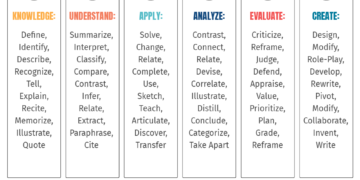Maybe It’s Time To Reconsider Your eLearning Strategy
Have you ever wondered why Nokia lost the game to Apple? The bottom line is that Nokia lost out because it failed to learn, and it failed to learn fast. Continuous learning keeps your business competitive and improves employee retention and engagement, thereby improving productivity. Onboarding new team members? You’ll need them to learn the ropes. It doesn’t only apply to organizations. Starting a new job? You’ll need to learn the ropes. Learning ropes, and other “stuff” like how to best answer customer queries or how to submit a leave form, is super important. Welcome to eLearning. And love it or not, you need to reconsider your eLearning strategy, even more so in today’s remote and hybrid environment, where knowledge means competitive advantage.
What eLearning Offers Organizations
- Flexibility
eLearning offers the flexibility of learning at your own pace, from any location, and on any device. This means that team members can access the training materials whenever it is convenient for them, making it easier to fit into their busy schedules. - Cost-effectiveness
eLearning eliminates the need for travel, reducing the costs associated with attending training sessions in person. Additionally, eLearning materials can be reused and updated, reducing the overall cost of training. - Personalization
eLearning allows team members to focus on the areas where they need the most improvement, providing a more personalized learning experience. - Scalability
eLearning can be easily scaled to accommodate a large number of participants, making it an ideal solution for organizations with a large workforce, or simply one where teams are remote.
eLearning Challenges
- Technical challenges
Technical issues can arise when using eLearning, such as compatibility issues with different devices and slow internet speeds, which can impact the overall experience. - Lack of interaction
eLearning can be a solitary experience, and team members may miss the interactions and collaborations that come with in-person training sessions. - Resistance to change
Some team members may be resistant to eLearning, preferring the traditional in-person training method. Overcoming this resistance can be a challenge for organizations.
Reconsider Your eLearning Strategy: Death By PowerPoint
Okay, so you need to train your team, so you email them a PowerPoint presentation, right? Wrong! Without the presence of an instructor, team members may not be as engaged in the training process, which can result in a lower retention rate. Boring content is the biggest problem with eLearning. And even if your PowerPoint is interesting, how do you make sure your teams open the mail or Slack message? And if they open it, how do you know they’ve actually taken the information in?
Think Netflix
Think about the last season of your favorite series, or cast your mind back to when Game of Thrones was the topic of every Monday conversation. Why? Because it was enthralling! You couldn’t not watch an episode! Well, you may not have the budget of Game of Thrones, but that doesn’t mean your content can’t be interesting. Use video. Infographics. Images. We even use GIF’s! Because if it isn’t fun, no one’s going to watch it!
Show Don’t Tell
You need to be able to show learners, not just tell them. It’s all about engagement. Interactive learning is better than passive learning for memory recall. If you want students to learn, they need to interact with the content. Quizzes and games are a good way to make your students do this, because they get your students thinking about what they’ve learned, which helps them retain it longer.
Quizzes are also a great way to test knowledge and make sure that your learners are actually understanding what you’re teaching them. They can be as simple as multiple-choice questions or true/false statements, or they can be more complex and require the learner to write out their answers in full sentences.
Games don’t have to be complicated either! You can use simple game mechanics, like “click here” or “tap anywhere on screen”, as long as they make sense within context of your lesson plan/module/whatever you call it. These types of interactions will help keep learners engaged, while also requiring some thought from them: this means more time spent learning, rather than just passively absorbing information.
Bottom Line
A 2023 study by PWC found that 80% of CEOs cite the need for new skills as their biggest business challenge. The bottom line is that learning is a critical success factor in business. If you’re going to be “in” in 10 years’ time, then it may be time to reconsider your eLearning strategy!

Whale
Train and scale your team without the chaos! Whale helps you build a central source of truth for all your processes, SOPs, and best practices — so you can onboard, train, and get everyone on the same page with Whale.




















